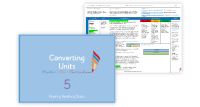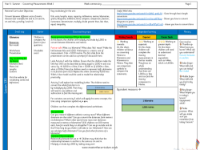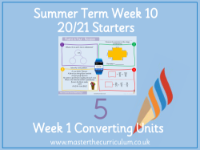Converting Units - Kilometres - Presentation

Maths Resource Description
The lesson on converting units focuses on understanding and working with kilometres and metres. Students begin by revisiting the concept of conversion between these two units of measurement. The term 'kilo' is explored, prompting students to recall that it means 'thousand', which aids in remembering that one kilometre equals one thousand metres. The lesson is structured with a series of activities where students are encouraged to complete statements by converting metres to kilometres and vice versa. For example, they will learn that 3,000 metres is equivalent to 3 kilometres, and 5 kilometres is the same as 5,000 metres. These exercises help students to develop a practical sense of what these measurements represent and how to ensure their answers are logical.
Further activities include using bar models to visualise and convert distances, such as understanding that 3 kilometres can be broken down into 1,800 metres. Students are also challenged to use comparison symbols (<, >, or =) to correctly relate different measurements, such as determining whether 500 metres is less than, greater than, or equal to half a kilometre. The lesson includes reasoning tasks where students apply their knowledge to real-life scenarios, like calculating how much money is raised in a charity walk based on the distance walked. Independent work reinforces the lesson's concepts, with tasks that require students to complete bar models, compare measurements, and solve problems involving the conversion of units. Discussion prompts encourage students to relate the concept of a kilometre to their everyday experiences, such as estimating the distance from their school to another location or the distance they travel to school.



